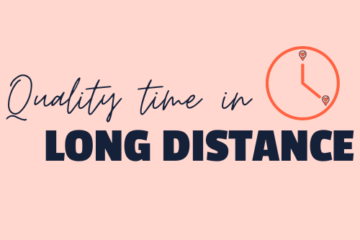In any relationship, communication is key. Beyond that, understanding how you and your partner give and receive love can have a profound impact on how successful and fulfilling your relationship becomes. This is where the concept of love languages comes in. First introduced by Dr. Gary Chapman in his book The 5 Love Languages, this framework helps couples better understand how they express affection and how their partner prefers to receive it. Similarly, the understanding of personality types, particularly through models like the Myers-Briggs Type Indicator (MBTI), can provide insight into a person’s preferences, strengths, and tendencies in relationships.
When these love languages and personality types are combined, they create a powerful lens through which couples can deepen their connection and foster a relationship built on mutual understanding and empathy. Let’s explore these concepts and how they intertwine.
The Five Love Languages
According to Dr. Chapman, there are five primary ways people express and experience love, referred to as love languages. Most people can appreciate all of these languages to a certain degree, but tend to have a primary one that makes them feel the most loved. Take his quiz to find out your top love language!
- Words of Affirmation: People who favor this love language feel most loved when their partner offers verbal expressions of affection, praise, encouragement, or appreciation. It’s all about kind words and vocalized support.
- Acts of Service: For those whose love language is acts of service, actions speak louder than words. Doing tasks, like cooking a meal or helping with a project, shows love and appreciation.
- Receiving Gifts: This love language isn’t about materialism but rather the thought and care that goes into selecting a meaningful gift. It’s the meaning behind the gift that counts.
- Quality Time: People who prioritize quality time value undivided attention and shared experiences. They feel closest when their partner is fully present and engaged with them or when they are making lasting memories.
- Physical Touch: For some, physical closeness is the most profound expression of love. Whether it be hugging, holding hands, or small acts of touching, individuals that prefer this love language value the safety, security, and connection that come through physical touch.
Understanding these love languages can drastically improve communication in relationships. It prevents the common misunderstanding of, “I’m showing love, but my partner doesn’t seem to notice,” because you may be speaking a love language that isn’t as meaningful to them.
Personality Types and Their Role in Relationships
While love languages deal with how people express and experience love, personality types, particularly in frameworks like the MBTI, deal with how people approach the world, process emotions, and interact with others. The MBTI categorizes individuals into 16 personality types, based on four characteristics:
- Extraversion (E) vs. Introversion (I): Extraverts are energized by social interaction, while introverts find energy in alone time.
- Sensing (S) vs. Intuition (N): Sensors focus on details and immediate experiences, while intuitives think about possibilities and the big picture.
- Thinking (T) vs. Feeling (F): Thinkers make decisions based on logic and objectivity, while feelers prioritize emotions and values.
- Judging (J) vs. Perceiving (P): Judgers prefer structure and planning, while perceivers like spontaneity and flexibility.
Each personality type brings unique strengths and challenges to a relationship. There is a wide spectrum of personality types from ESTJ to INFP, making up the 16 categories.
The 16 Personalities website provides a free quiz that analyzes your responses to identify your personality type. Upon taking the quiz you can read about your personality type and how it affects your friendships, romantic relationships, parenthood, and more. Gaining insight into both your and your partner’s personality types can significantly deepen your understanding of one another.
The Intersection of Love Languages and Personality Types
Most people tend to show love in certain ways because of how they experience it themselves. Because one may have a different love language than their partner, there could be a mismatch that leads to misunderstandings. An acts of service oriented partner may think, “I’m doing everything to make life easier for them, why don’t they feel loved?” Meanwhile, the partner who prefers physical touch might feel neglected without enough physical affection, but might not know how to ask for it. Understanding both the love language and personality types in this dynamic can help each partner recognize that they express love in different ways and that adjusting their actions to meet their partner’s needs will deepen their connection.
For example, you might try to practice the type of love that your partner prefers over what you prefer, to show that you are making an effort to make them feel more loved and understood. If you are both doing this for each other you will likely be overall happier because both partners’ needs will be satisfied. It is also helpful to research your partner’s personality type in order to better understand how they handle certain situations and see the world.
Building a Stronger Connection
When love languages and personality types are used together, they provide powerful insight into a relationship, foster empathy, and allow partners to speak to each other’s hearts on a deeper level. Love is a language that both personality and personal preferences shape — and it’s up to each couple to learn how to speak it fluently.
Be sure to follow along for more about relationships, long distance, and dates. Sign up for our weekly email HERE.

